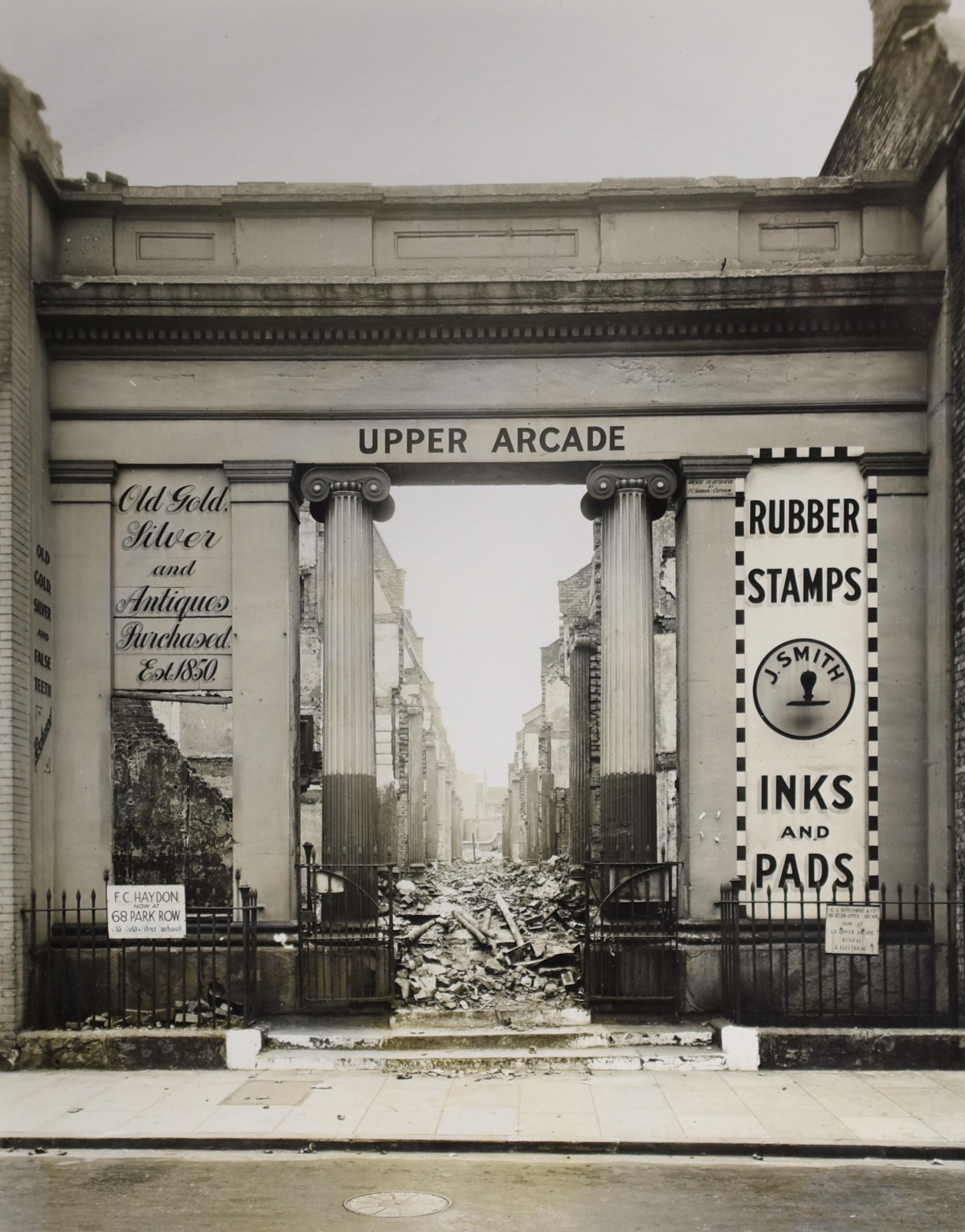Mark O'Leary highlights the contribution of Bristol merchants to the city's architectural history.
For those who are at the point of deliberation and require architectural or historic building conservation thesis inspiration, the University of Bath's Bristol Region Building Record (BRBR) collection of photographic prints provides an evocative insight into Bristol's pre and post-war past. As each of the collection folders is carefully opened, powerful and sometimes haunting images of Bristol's forgotten wealth and grandeur, and the devastation following the World War II German Luftwaffe bombing raids (which destroyed parts of Bristol in 1940 and 1941) unfold. Moreover, the collection records the post-war development of Bristol which had a similar if not greater impact on Bristol's architectural heritage and shaped the second city as we see it today.
The BRBR contains original photographs, loose prints and copies of etchings and engravings of Bristol's architectural heritage and some of the key views of the city portrayed by the leading artists of the time. They were collated by University scholars, architects and surveyors, unsure of the eventual fate of buildings and concerned about the loss of the architectural heritage of Bristol, who decided to record as many of the city's principal heritage assets as possible before they were lost forever. The BRBR is evocative of pre and post-war Bristol and includes images that cannot be easily found elsewhere.
My own research interests concerned the architectural heritage of the merchants of Bristol from 1600 to 1900, charting its development, influences and conservation. My thesis looked at how the merchants contributed to the development of the city, initially focusing on mercantile activities around the port, and how the wealthy merchants shaped the city's architectural heritage. It also touched on Bristol's merchants, who owned slaves or were associated with the triangle trade, ascertaining where they lived and worked. I explored what merchant heritage remains in Bristol today and, by way of case studies, the ways in which this surviving architectural legacy has been impacted by modern building developments. I also looked at what conservation issues should be considered in order to protect, or enhance, the city's mercantile heritage for future generations.
The BRBR was a useful resource for this study and helped put into context and illustrate Bristol's merchant building heritage, some which has been lost and some which remains today and should be protected. The BRBR is an invaluable resource for architectural and historic building conservation scholars at undergraduate and postgraduate levels and for professionals alike.
